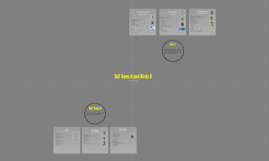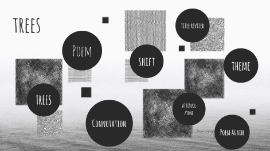Trees Presentation
Transcript: By Ethan Scharf People in my group: Cody, Wesley, Jenna, Anna and Forrest. Essential Question: How does elevation affect biotic and abiotic systems? Testable Questions (Purpose): 1. How does elevation affect the height of trees? 2. How does elevation affect the number of species at different elevations? 3. How does elevation affect the circumference of tree trunks? Tools/Materials: - 5 meter rope (Measuring out 100 sq. meter plot) - Flagging - Centimeter tape (Measuring tree circumference) - Field guide - Data table - Sample bags Procedures: For the first question you would need to measure the height of the trees at base level. 1. First you need to make a 10 by 10 meter box for a control. Then measure all the tree 10 by 10 box. 2. You would need a scale to measure the height of a tree, like finding the height of one of us and standing 10 feet away. 3. Then find how many pencils make up that person. Then stand 10 feet away from the tree that you are measuring and find how many pencils go into that tree. (ex. if 1 pencil makes up a 5 foot tall person, and the pencil goes into the tree 5 times, then the tree would be 25 feet tall.) 4. Then use the same scale as you go up the mountain. After that find an average. 1. For the second question, measure a 10 by 10 meter box and count the number of trees in that square. 2. Do the same thing as you go up the mountain and find an average. 1. For the third question, first measure out a 10 by 10 square meter box. 2. Then take a centimeter tape measure and measure the circumference of all of the trees in that area. 3. Then find an average. Conclusion: I've learned a lot about the effects on biotic and abiotic systems over the course of this study. One thing I learned is that biotic systems have to adapt as the elevation increases, but abiotic systems, since they aren't living, obviously don't have to adapt. One of my group's testable questions was 'What was the height of all the trees in our area?' Our hypothesis for that question was that the higher in elevation we go the tree's height will decrease. This is because the higher in elevation you go the more stunted the trees become. Our group's hypothesis is supported by information in our graph. Here is some information to support our hypothesis. My statement for this study is that the higher in elevation we go, the height of the tree will decrease due to the stronger elements. Tree Height: Elevation: Elevation: Elevation: 1,719' 3,052' 3,577' Conclusion (Continued): Our other testable question was 'How does elevation affect tree species at different elevations?' This is the hypothesis. 'We (our group) believes that at the first elevation there will be at least 10 different species but as we increase in elevation certain species will drop out and hardier species will replace them. This means that some species don't adapt to the elevation but others do.This hypothesis was supported by our study findings. Some information to support our hypothesis is that in our chart we found certain species like Beech and Yellow Birch to drop out and species like Birch and Fir to replace them as we climbed higher. My Statement: Our studies concluded that the higher in elevation we increased, the hardier species begin to replace the weaker species. Conclusion (further continued): My group's final testable question was 'How does elevation affect tree circumference at different elevations?' Our hypothesis was that since at higher elevations trees don't get as much nutrition and can't grow as well, the circumference measurement will be smaller. This hypothesis was supported by the information in our chart. Some information includes: Circumference Elevation: Elevation: Elevation: Measurement: 1,719' 3,052' 3,577' Tree 1: 25.5" 36" 3" Tree 2: 46" 21" 2" Tree 3: 48" 36" 2.5" My Statement: My group's studies concluded that as you increase in elevation, the circumference measurement will decrease since the trees can't grow as well. Error Analysis: We tried to control our experiments as much as possible. We measured the 100 square yard box exactly, and we only counted trees with a circumference of 3 inches or more. This way, our data should be as accurate as it can be, although sometimes we didn't name our trees the correct species, leading to some confusion. After we resolved that, we cleared up some wrong data. Recommendations: I think that to make our data more valid in the future we could have been more precise in identifying our tree species. For instance, we named fir pine, although there wasn't a single pine around where we took our studies. Next time, I think we could definitely be more careful. Other than that, I think our group did a great job with our studies. Connection to Other Systems: These study's evidence may affect many different systems, biotic and abiotic. First of all, tree circumference and height might affect a logging company by making it so they won't cut trees with a certain trunk circumference or height. Another example

















